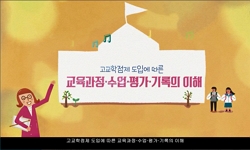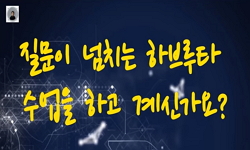본 연구는 강원대학교와 쓰촨문리대학교 중심으로 신입생 선발, 인재 양성목표, 교과 과정, 학점 구성 및 학점 평가 방법, 수업 평가, 교수법, 대학교 운영, 학생 취업, 교원 구성, 대학평가 ...
http://chineseinput.net/에서 pinyin(병음)방식으로 중국어를 변환할 수 있습니다.
변환된 중국어를 복사하여 사용하시면 됩니다.
- 中文 을 입력하시려면 zhongwen을 입력하시고 space를누르시면됩니다.
- 北京 을 입력하시려면 beijing을 입력하시고 space를 누르시면 됩니다.
https://www.riss.kr/link?id=T16818172
- 저자
-
발행사항
춘천 : 강원대학교 대학원, 2023
- 학위논문사항
-
발행연도
2023
-
작성언어
한국어
- 주제어
-
KDC
670.71 판사항(6)
-
발행국(도시)
강원특별자치도
-
기타서명
A Study on the comparison of Music Educational System in National or Public (Local) University between Korea and China; Focused on Kangwon National University and Sichuan Public University of Arts and Science
-
형태사항
VI, 122 L. : 삽도 ; 30 cm
-
일반주기명
강원대학교 논문은 저작권에 의해 보호받습니다.
지도교수: 안성희
참고문헌 수록 -
UCI식별코드
I804:42002-000000033599
- 소장기관
-
0
상세조회 -
0
다운로드
부가정보
국문 초록 (Abstract)
본 연구는 강원대학교와 쓰촨문리대학교 중심으로 신입생 선발, 인재 양성목표, 교과 과정, 학점 구성 및 학점 평가 방법, 수업 평가, 교수법, 대학교 운영, 학생 취업, 교원 구성, 대학평가 등 양국 대학의 운영 방법을 비교하는 데 중점을 두었다.
비교 결과를 살펴보면, 강원대학교는 한국과 세계의 사회적 변화와 수요에 의해 교육목적을 설정하고 있으며, 교육목표 역시 한국과 세계적인 수준에 초점을 맞추고 있다. 이와 달리 쓰촨문리대학교는 학교가 소재하는 지역의 경제·사회 발전상의 수요에 맞추어 목표를 설정하고 있다. 강원대학교 음악학과는 음악교육 혹은 음악 영역의 전문가를 양성하는 데 초점을 맞추는 반면, 쓰촨문리대학교 음악학과는 기초 교육기관의 교원 혹은 일선의 문예기관에서 공연·관리 등의 업무를 담당할 수 있는 인력 양성에 초점을 맞추고 있다. 대학입학 시 요구되는 수능 과목의 경우 한국에서는 음악학과 진학을 위해 국어, 영어 성적만 필요한 반면에, 중국에서는 국어, 수학, 영어 문과 종합 혹은 이과 종합 등 4개 과목의 성적이 모두 반영되어 대학입학시험 준비에 필요한 교과목 범위가 더 넓은 것을 알 수 있었다. 실기시험을 살펴보면, 중국의 대학교에서는 음악 이론, 시창 청음이 추가되어 시험 과목의 수 역시 한국보다 더 많았다. 이수 학점을 살펴본다면, 한국의 음악학과에서 요구하는 이수 학점이 중국보다 적었다. 반면에 개설된 교과 과정과 선수 과정은 한국이 더욱 다양하였다. 전공 영역이 이수 학점에서 차지하는 비율 또한 높아 학생들이 선택할 수 있는 과정의 선택폭이 넓은 것을 알 수 있었다. 한국 대학교의 수업 평가와 교수법은 ‘학생중심’이라는 교육이념에 중점을 두고 있었다. 강원대학교와 쓰촨문리대학교의 음악학과 졸업생 취업률과 교원당 학생 수를 비교해본다면, 강원대학교가 취업률이 낮은 평가율을 보였다. 강원대학교가 교원당 학생 수가 적었다. 또한 교원의 구성 역시 학력 수준과 외국에서의 최종 학력을 취득한 비율이 쓰촨문리대학교 보다 높은 비율을 나타냈다. 한국 대학교의 음악 석사과정은 학생들의 전공 실기 능력을 키우는 데에 치중하였고, 한국의 대학평가는 대학의 발전 계획, 재정, 관리, 감사, 직원·교원의 대우 및 복지, 학생의 장학금 제도, 학생의 권익 보호, 사회봉사 등의 영역에 집중되지만, 중국의 대학평가는 사상, 정치, 교육품질 보장 시스템의 구축, 인재양성의 전반적 과정에 대한 품질을 중심으로 진행되고 있다는 사실을 연구를 통해 알 수 있었다.
강원대학교는 학생 수 감소와 낮은 음악학과 취업률이라는 문제에 직면한 만큼 더 많은 유학생 유치와 취업 지원 시스템 혁신을 통해 문제를 극복할 새로운 방법을 찾을 수 있을 것이다. 쓰촨문리대학교 역시 교과과정과 학점 구성, 수업 평가, 교수법, 교원의 구성 등 개선 제안을 통해 학생들의 질적 향상을 기대할 수 있으며, “학생 중심”의 교수법 확립 효과도 기대할 수 있을 것이다. 그리고 쓰촨문리대학교 음악학과에서 개설된 석사과정의 문제점과 구상 방안을 제안함으로써 두 학교가 교수, 학생, 학점 인정, 공동운영 과정 등의 영역에서 교류할 수 있는 미래 지향적 계획을 논문을 통해 제시하였다.
다국어 초록 (Multilingual Abstract)
This study focuses on comparing the operation of each university such as new student selection, talent development goals, curriculum, credit composition and credit evaluation methods, class evaluation, teaching methods, university management, student ...
This study focuses on comparing the operation of each university such as new student selection, talent development goals, curriculum, credit composition and credit evaluation methods, class evaluation, teaching methods, university management, student employment, faculty composition, and university evaluation and others, centering around Kangwon National University and Sichuan University of Arts and Science.
Looking at the comparison results, Kangwon National University sets educational goals according to social changes and demands in Korea and the world. In contrast, Sichuan University of Arts and Science is setting goals according to the needs of the economic and social development of the region where the school is located. The Department of Music of Kangwon National University focuses on music education or cultivating experts in the field of music, while the Department of Music of Sichuan University of Arts and Science focuses on cultivating teachers at basic educational institutions or its human resources who can be in charge of performance and management at front-line literary institutions. In the case of the subjects required for college entrance, only Korean and English scores are required for admission to the department of music in Korea, whereas in China, all four subjects – Chinese, Mathematics, English, and Comprehensive Liberal Arts or Comprehensive Natural Sciences – are reflected, therefore the range of subjects required to prepare for the college entrance exam is more wide-ranging may be known. Looking at the practical examination, Chinese universities have added music theory and sight-singing and listening, so the number of examination subjects is also more than in Korea. Looking at the number of credits required for completion, the number of credits required by the music department in Korea is lower than that in China. On the other hand, Korea has more diverse curriculum and prerequisite courses. The ratio of the major area in the number of credits required for completion is also high, so students have a wide range of courses to choose from. Class evaluation and teaching methods of Korean universities more closely follow the educational philosophy of ‘student-centered’. Comparing the music department graduate employment rate of Kangwon National University and Sichuan University of Arts and Science, Kangwon National University has a lower employment rate. Kangwon National University has a lower number of students per faculty member, a higher percentage of faculty members with doctorates and performing artist degrees, and a higher percentage of final degrees obtained abroad than Sichuan University of Arts and Science. The master's program in music at Korean universities focuses on developing students' practical skills in their major. University evaluation in Korea focuses on areas such as university development planning, finance, management, audit, treatment and benefits for staff and teachers, student scholarship system, protection of students' rights and interests, and social service, on the other hand, university evaluation in China is being conducted centering around thoughts, politics, the establishment of an education quality assurance system, and the quality of the overall process of training talented individuals.
As Kangwon National University faces the problem of a decrease in the number of students and a low employment rate in the music department, it will be able to find a new way to overcome the problem by attracting more international students and innovating the employment support system. Sichuan University of Arts and Science can also expect to improve the quality of students through improvement suggestions such as curriculum, credit composition, class evaluation, teaching method, and teacher composition, and the effect of establishing a “student-centered” teaching method can also be expected. In addition, proposed the problems and ideas of the master's program offered by the Music department of Sichuan University of Arts and Science, and the plan of exchange between the two schools in the fields of professors, students, credit recognition, and joint operation of courses.
목차 (Table of Contents)
- 목 차
- Ⅰ. 서론 1
- 1. 연구의 필요성 및 목적 1
- 목 차
- Ⅰ. 서론 1
- 1. 연구의 필요성 및 목적 1
- 2. 선행연구 고찰 3
- 3. 연구의 범위 및 방법 5
- 4. 연구의 제한점 8
- Ⅱ. 이론적 배경 9
- 1. 비교교육학 9
- 2. 한·중 대학교의 유형 13
- 3. 근대 이래 한·중 음악교육의 발전 개황 17
- 4. 강원대학교와 쓰촨문리대학교의 음악교육 현황 22
- Ⅲ. 한. 중 음악교육 시스템 비교 24
- 1. 신입생 선발 정책 비교 24
- 2. 인재양성 목표 비교 34
- 3. 커리큘럼 비교 42
- 4. 학점 구성과 인증 방법 비교 52
- 5. 수업 평가 비교 65
- 6. 전공 과정 교수법 비교 71
- 7. 취업 상황 비교 78
- 8. 교원 구성 비교 83
- 9. 대학원 운영 비교 85
- Ⅳ 한·중 대학교 기관평가 비교 92
- 1. 한·중 대학교 기관평가 개황 비교 92
- 2. 한·중 대학기관 평가내용 비교 97
- Ⅴ. 결론 및 제언 103
- 1. 비교분석 결과 103
- 2. 강원대학교가 직면한 문제와 개선 방안 제언 107
- 3. 쓰촨문리대학교 음악학과 학부 과정 개선 제언 109
- 4. 쓰촨문리대학교 음악학과 석사과정 개설의 문제와 방안 110
- 5. 강원대학교와 쓰촨문리대학교 음악학과의 국제 교류에 대한 제언 111
- □ 참고문헌 113
- □ Abstract 120
- <표 차례>
- <표 1> 한국 고등교육 현황 분석 15
- <표 2> 중국 고등교육 현황 분석 15
- <표 3> 한·중 19세기 말기 20세기 초 이래 음악교육 발전의 비교 21
- <표 4> 지원 자격 비교 26
- <표 5> 강원대학교 음악학과 실기 과목 및 배점 28
- <표 6> 쓰촨문리대학교 음악학과 실기 과목 및 배점 29
- <표 7> 시험 과목, 배점과 내용 비교 30
- <표 8> 선발 방법 비교 33
- <표 9> 국가 차원의 교육목표 관련 내용 비교 36
- <표 10> 강원대학교와 쓰촨문리대학교의 교육목표 비교 38
- <표 11> 음악학과의 인재양성 목표 비교 42
- <표 12> 강원대학교 음악학과 과정 설치와 교육목표 대응 관계 46
- <표 13> 쓰촨문리대학교 음악학과 과정 설치와 교육목표 대응 관계 48
- <표 14> 전공 영역 같은 과목 50
- <표 15> 강원대학교 음악학과 학점 구성 57
- <표 16> 쓰촨문리대학교 음악학과 이수학점 구성 59
- <표 17> 강원대학교 등급과 평점 대응 표 63
- <표 18> 쓰촨문리대학교 등급과 평점 대응 표 64
- <표 19> 강원대학교와 쓰촨문리대학교 학점 인증 방법 비교 64
- <표 20> 수업 평가 운영 비교 71
- <표 21> 수업 기본 상황 비교 75
- <표 22> 수업 구조와 시간 구성 비교 75
- <표 23> 교사 수업 과정 비교 76
- <표 24> 학생 수업 과정 비교 76
- <표 25> 취업 상황 비교 81
- <표 26> 석사과정 운영 비교 90
- <표 27> 대학 기관평가 개황 비교 96
- <표 28> 한국의 대학 기관평가 내용 97
- <표 29> 중국의 대학 기관평가 내용 98
- <표 30> 대학 기관평가 내용 비교 99
- <표 31> 쓰촨문리대학교 음악학과 석사과정 학점 구성 구상 111
- <차트 차례>
- <차트 1> 고등교육 기관 법인별 구성 비교 17
- <차트 2> 음악학과 개설 과목 및 비율 비교 52
- <차트 3> 음악학과 학점 구성 비교 59
- <차트 4> 이수학점 구성 비교 61
- <차트 5> 주체별 수업 과정 구성 비교 77
- <차트 6> 교원 학위 구성 비교 85
- <차트 7> 교원 최종 학위 취득 나라 비교 85













